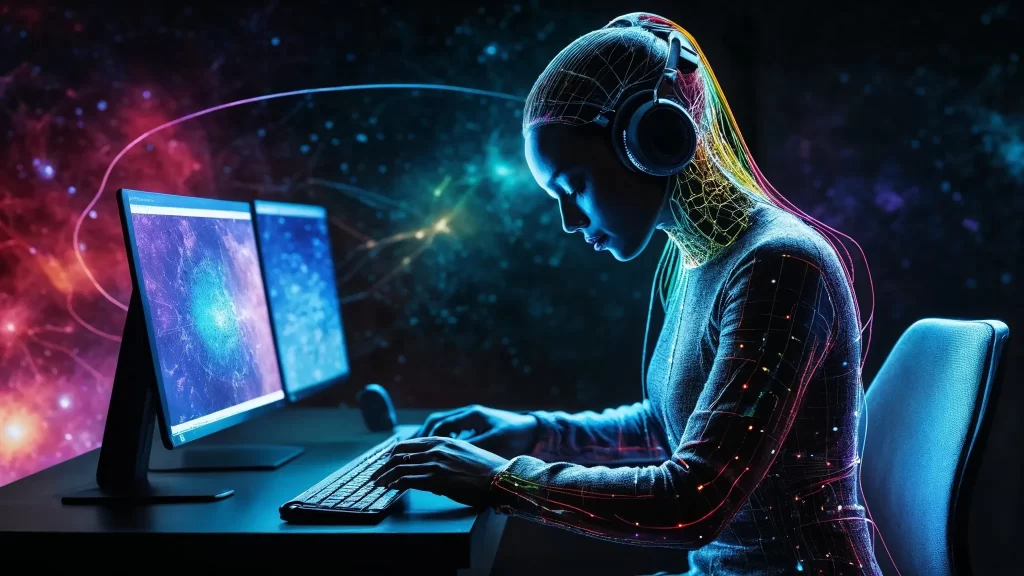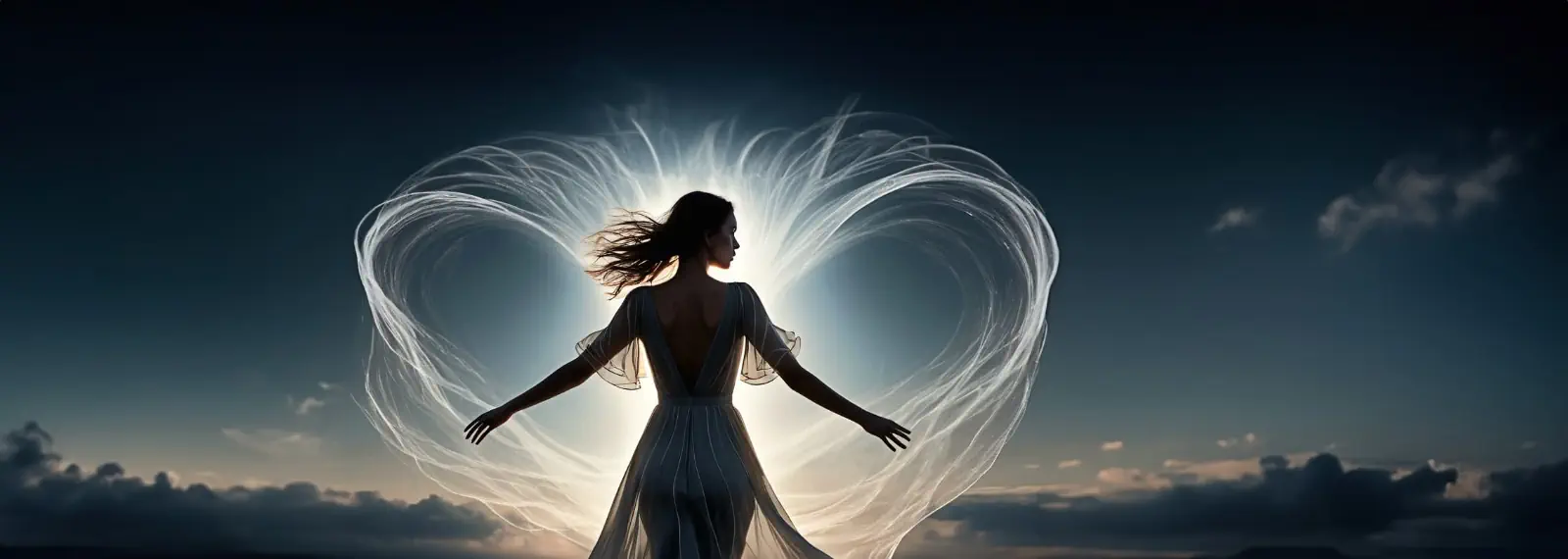Welcome to the Emotional Revolution in Generative AI
Welcome, Tech Enthusiasts, to this new digital world where technology meets human emotions and where your tiniest mouse movement or touchscreen gesture creates not just art but an emotion-infused masterpiece. This isn’t just another tech innovation; it’s an emotional revolution that is happening with the recent release of Tengr.ai 0.8.
Even a small movement caught by your mouse or touchscreen can alter the creative process, infusing your emotions directly into the art you create. Sounds fascinating and unbelievable, right? But this isn’t science fiction; it is reality, thanks to Tengr.ai 0.8 and its innovative new feature: EmotionFlow. In this reality, ’emotions are the language of the soul, and technology now speaks it fluently, allowing a deeper connection between your emotions and the digital art you create.
Translating Movements into Emotional Art
Let’s see what this technology is about and why we consider it a breakthrough.

Tengr.ai is always striving to keep up with the ever-evolving technological innovations and offer the best for its user community. With every new step we take in this direction, we are not just introducing innovations that enhance the user experience, but we’re also taking creativity to a new level. With this latest innovation, which is considered the most striking feature of Tengr.ai, we’re taking this mission even further by making it unique among other typical offerings in the AI market today.
The Science of Emotion: Interpreting Emotional State Through Cursor Movements
EmotionFlow can detect even the slightest gestures, such as the flick of a cursor or the swipe on a screen, and transform them into emotional data. Multiple studies, like Yamauchi et al. (2018) or Freihaut et al. (2021), have shown that these seemingly insignificant movements can reveal your emotional state. (We recommend the literature review by Yang et al. if you are interested in the subject.) This innovation allows you to create art by using your actual emotions, making every image deeply personal.

Innovative research in Human-Computer Interaction also proved that even the slightest movements when you’re using your touchscreen, mouse, or keyboard, like the speed, force, and direction in which you’re moving your cursor on the screen —can all be analyzed and interpreted, making steps towards a more intuitive and empathetic interaction with technology.
Emotions and Interactions
In 2023, Gorbunova and Kiselev made outstanding progress in understanding how our unconscious movements can be interpreted. This research is focused on collecting data about cursor movements, such as distance traveled, the maximum deviation from the line that connects the start and end points of the movement, the time the subject interacted with the computer mouse during the session, and the maximum speed of the cursor. Gorbunova and Kiselev trained classifiers for emotion analysis based on human-computer mouse control on the created dataset and analyzed the results.
Szabó (Tengr.ai’s founder) and Genge proved that efficient behavior prediction based on user events is not only possible but can also be done in a computationally efficient manner. In their research, they transformed 20 million user events (20,692,840 rows) into a sparse matrix in about 7 minutes (434.08 s) and used this matrix to train a neural network to accurately predict user events. Efficiency is key for generative image AI because the diffusion model pipeline’s inference is relatively slow, so we don’t want to slow it down with a convoluted solution for emotion prediction.
Another highly informative and inspirational paper published in the MIS Quarterly, Hibbeln et al. also offered valuable discoveries in designing adaptable technology systems that are capable of processing and responding to users’ emotions. They helped us understand that our emotional states can be measured in real time.
Interacting with Art
Let’s see it in practice: all you have to do is enter your prompt into Tengr.ai 0.8, and you will see a captivating swarm of particles moving across your screen. This isn’t just digital artistry—it’s a doorway to your feelings. As you guide these particles with a swipe or a glide, each movement is like a brushstroke in this new form of digital art. This form of interaction creates a more meaningful connection between you and your images by making sure that every creation is unique in its capability to reflect your inner emotional world. It is actually a digital art that is not only visually captivating but also deeply personal.
Letting Creativity Fly
With Tengr.ai’s extensive multilingual capabilities of generating images from prompts in 74 different languages, EmotionFlow is like a revolutionary addition to a 75th language: the language of emotions. This addition pushes the boundaries of traditional linguistic limitations, taking creativity to a new level by giving it the freedom of expression. The fact that it’s so widely inclusive makes it even more accessible to a vast audience with different cultural backgrounds, enabling them to create art using their own language.
Improving EmotionFlow Together
But the most exciting part? The experimental nature of this new feature means every interaction you have enhances your experience and gives us anonymized data. While we don’t practice continuous online learning, the future versions of Tengr.ai will be better if we gather more data from our users. Each swipe and each movement of your cursor helps refine our emotion recognition algorithms, making the system smarter and more receptive to your moods over time. You’re not just creating digital art; you’re improving an emotionally intelligent technology that learns and evolves with its users. As we continue to unveil the mysteries of human emotions through technology, one thing is clear: this adventure is just beginning.
As Jeff Bezos has said, ‘We’re at the beginning of a golden age of AI. Recent advancements have already led to inventions that previously lived in the realm of science fiction—and we’ve only scratched the surface of what’s possible.’ Tengr.ai’s EmotionFlow demonstrates this by merging emotional depth with technological innovation to create a tool that enhances your creative expression.
Embrace it or Not: The Choice Is Yours
We understand that EmotionFlow is not everyone’s cup of tea, and that’s totally okay. It is entirely up to you whether you want to experiment with it or not. Maybe you’re more comfortable with the traditional approach. In this case, feel free to stick with it. However, we invite you to experiment with this new awesome tool — you might be surprised by the stunning creations that you end up with as a result of your current emotional state. It could just be a way to pass the time while you wait for your image generation, or you might create something personal and unrepeatable by anyone else. The decision is in your hands.
Join us in the Emotional Revolution

Ready to revolutionize the way you interact with technology? Dive into Tengr.ai 0.8 and let your emotions lead the way. Unleash your creativity with EmotionFlow and join a community of forward-looking, proactive people who are pushing the boundaries of AI and artistic expression. Don’t just watch the future unfold in front of your eyes—shape it with your own emotions and experiences. Explore our new features, share your creations, and help us take this technology even further. Your feedback is crucial to us. Let’s join forces and discover this exciting new world together.
Set your creativity free and have fun!





Cool app
szuper
Is it possible, to pay with PayPal ?
Not yet, but we hope to support it soon. Until that time, please use Stripe.
How to use this innovation.
Just move your mouse or finger on the touchscreen. Nothing extra is needed.